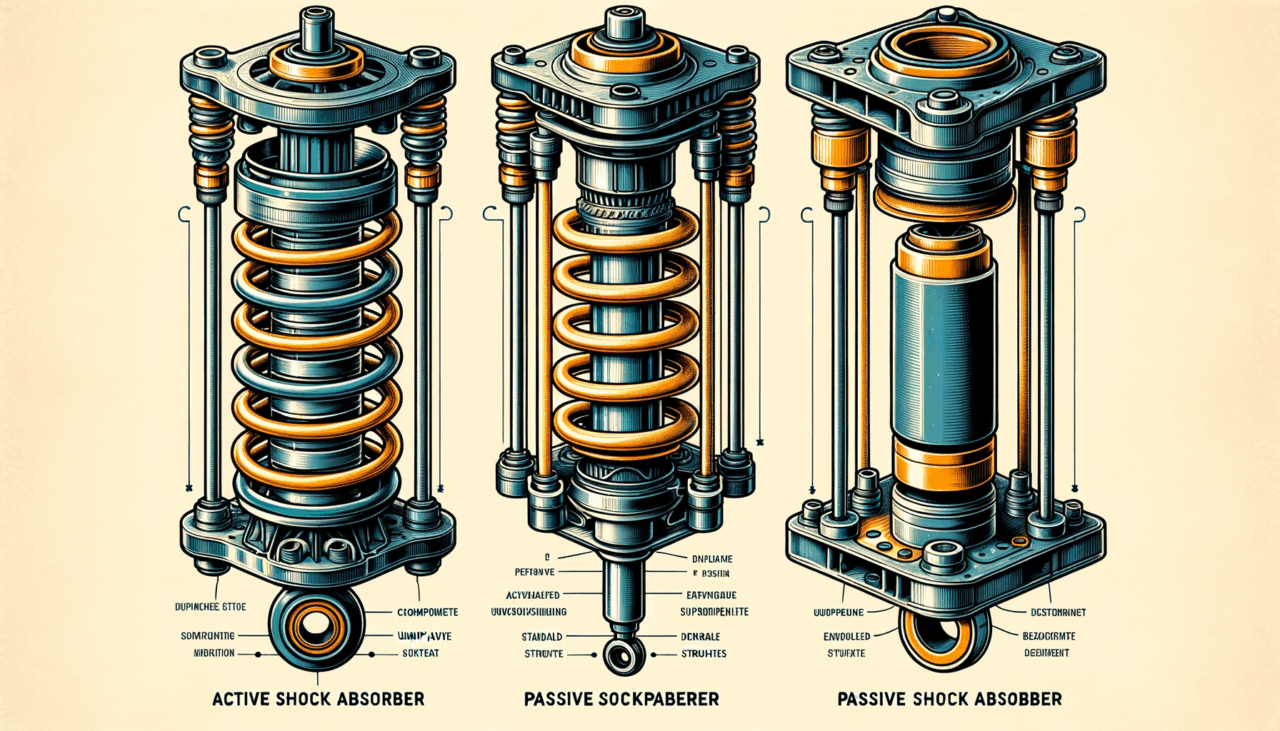Active vs. Passive Shock Absorbers – What’s More Durable?
In the heart of Cairo’s bustling streets, where the symphony of honking horns and vibrant life intertwines, the journey of a vehicle can be likened to a dance across ancient cobblestones and modern highways. As we traverse these roads, the unsung heroes of our vehicles—the shock absorbers—play a pivotal role. But in the grand debate of active versus passive shock absorbers, which stands the test of time and terrain? Let us embark on this journey of discovery, drawing from both the wisdom of engineering and the tales of travelers across Egypt and beyond.
The Tale of the Shock Absorber
Before we delve into the intricacies, let us first understand the protagonists of our story. Shock absorbers are designed to smooth out the ride by absorbing and dampening the impact of road irregularities. They are the guardians of comfort and stability, ensuring that each journey is as pleasant as the last.
Active Shock Absorbers: The Adaptive Guardians
Active shock absorbers are the storytellers of innovation and technology. Imagine them as a savvy desert guide who adjusts his pace and path according to the shifting sands. These absorbers use sensors and actuators to adjust their damping characteristics in real-time, responding to road conditions, speed, and driver inputs.
Characteristics:
– Adaptive Damping: Active absorbers can change their firmness, offering a smoother ride on rough terrains and a firmer grip on highways.
– Enhanced Control: With sensors feeding data to a central control unit, these absorbers provide superior handling and stability.
– Complex Design: The integration of electronic components and sensors makes them more complex, often requiring specialized maintenance.
Passive Shock Absorbers: The Reliable Companions
In contrast, passive shock absorbers are like the timeless wisdom of an elder who knows the path well. They operate on a fixed damping rate, using hydraulic fluid and springs to absorb and dissipate energy from road impacts.
Characteristics:
– Simplicity and Durability: With fewer components and no electronic parts, passive absorbers are less prone to failure and easier to maintain.
– Consistency: They provide a predictable response, which can be advantageous in stable driving conditions.
– Cost-Effectiveness: Generally, these absorbers are more affordable and have lower maintenance costs compared to their active counterparts.
The Comparative Table: Active vs. Passive Shock Absorbers
| Feature | Active Shock Absorbers | Passive Shock Absorbers |
|---|---|---|
| Adaptability | Adjusts in real-time for varying road conditions | Fixed damping rate, less adaptable |
| Comfort | Offers superior comfort by adjusting to road and speed | Consistent comfort, may not handle sudden changes as well |
| Control | Enhanced control and stability through sensor feedback | Reliable control, but less responsive to dynamic changes |
| Complexity | More complex with electronic components | Simpler design with fewer parts |
| Maintenance | Requires specialized maintenance; potentially higher costs | Easier and cheaper to maintain |
| Cost | Generally more expensive due to advanced technology | More affordable and cost-effective |
| Durability | Durable but dependent on electronic component reliability | Highly durable due to simplicity |
The Verdict: What’s More Durable?
As we navigate through this realm of suspension systems, the question of durability emerges as a central theme. In the timeless dance of active versus passive, durability often leans towards passive shock absorbers. Their simplicity and lack of electronic components make them less susceptible to failure over time, especially in regions where maintenance facilities may be as rare as an oasis in the desert.
However, it’s essential to consider the nature of your journey. If your path is one of varied terrains and you seek the pinnacle of comfort and control, the active shock absorber may be your steadfast ally. Yet, for those who value reliability and simplicity, the passive shock absorber stands as a testament to the age-old adage: sometimes, less is more.
Conclusion
In the end, the choice between active and passive shock absorbers is a reflection of one’s journey and destination. As you traverse the roads, whether they be the bustling streets of Cairo or the serene expanses of the Sahara, may this guide serve as your compass, helping you choose the system that best aligns with your path.
Embark on your journey with confidence, knowing that whether active or passive, your shock absorbers are there to ensure each ride is a story worth telling.

Comments (0)
There are no comments here yet, you can be the first!